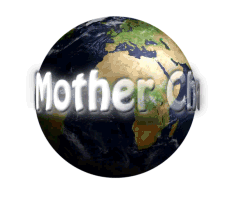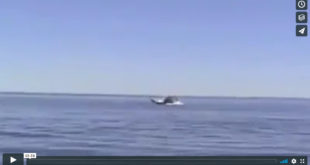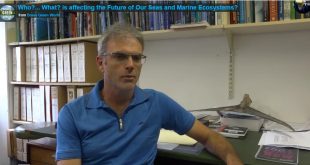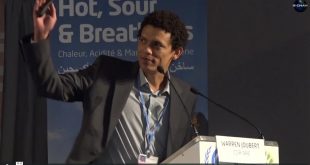Peru’s seabed is rich in natural diversity with about 450 different species of algae live in just this part of the Pacific Ocean. The small mining community of San Juan de Marcona, one of five districts in the province of Nazca, Southern Peru, depends on the port and most of its 20 thousand inhabitants are fishermen. Fifteen fishing associations in the area have created a cooperative that mainly deals with the harvesting and sale of algae (kelp), which is known, at the national level, as a model of sustainable fishing that respects the marine ecosystem, thanks to the “passive harvesting” technique used, which avoids the uprooting of the algae (kelp) and thus protects their natural and continuous reproduction.
Manuel Milla, a resident of Marcona and Vice president of COPMAR (Community of Artisan Fisherfolk of Marcona) spoke in an interview with Mother Channel about sustainable community based fishing and passive onshore kelp harvesting methods. He compared the Caribbean oceans transparent, low primary productivity waters with the Humboldt channel which has a high primary productivity, making the waters very rich in sea life, including plankton, however, there has been, over time, changes in the concentration of nutrients, or maybe types of plankton, etc. in the channel current resulting in lower visibility, which is affecting the free-divers, fishing, etc. ultimately leading to a decrease in catch numbers generally.
The pressures of climate change have forced the Marcona community to become more resourceful and to focus on sustainable use of their resources, for example, if the temperatures rises to 20 degrees Celsius, the algae can die and El Nino this year affected 60 per cent of the produce. In earlier years, due to the issue of over- fishing and from the 1990s onwards a decrease in marine produce, the community was suffering economically, however, in 2003 the government decided to help with livelihoods and allotted stretches of the beach to fishermen and also identify which species can best help earn a living. The community learnt that the giant kelp (large seaweeds) could generate money for them, but in order to manage that, we had to understand the biology, and nowadays, we know that with this plant, that if we just cut it, it won’t recover, so the community then decided that there will only be passive harvesting picking up the pieces that have washed ashore, which are then sold for up to US$600 per tonne which is in demand by the food, cosmetic and agro industries the world over. In this way, we are providing economically for the 500 fishermen, who are living off the earnings from selling kelp, as well as promoting learning about the kelp and how it can be used as food in a bid to reduce the pressures on white-meat fish such as flounder, and sea bass.
The Peruvian fishing community will continue working with scientific & government organizations to ensure long term viability of harvesting marine resources and protecting the livelihoods of the local communities.
Links :
https://sharedvalue.org/groups/creating-shared-value-fishermen-san-juan-de-marcona
http://www.thehindu.com/opinion/blogs/blog-free-for-all/article6726415.ece (Punta San Juan Bay, Peru)
http://www.iwnsvg.com/2014/12/14/feature-peru-environmental-lessons-for-caribbean-development/
 Mother Channel Environmental, climate change news and media.
Mother Channel Environmental, climate change news and media.



